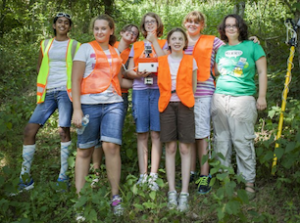Insights into Student Motivation
Motivating students is always a hot topic among education writers and researchers, but never more so than the last several years. This MiddleWeb Resource Roundup gathers blog posts, interviews and studies centering on some of the recent commentary on intrinsic and extrinsic sources of motivation. You’ll find plenty of solid research and advice that will serve you well in 2014 and beyond.
Dr. Carol Dweck — the Lewis and Virginia Eaton Professor of Psychology at Stanford University and author of 2006’s Mindset: The New Psychology of Success — and her colleague Dr. Lisa Blackwell contributed to Larry Ferlazzo’s Classroom Q&A discussion on ‘Classroom Strategies to Foster a Growth Mindset.’
They began by writing: “Our research on the growth mindset shows that students who believe they can grow their basic abilities have greater motivation and higher achievement than do students who believe their abilities are fixed, and that teachers can influence students’ mindsets.” The two continue by laying out strategies that can help teachers encourage growth mindsets to build motivation for learning.

Sarah D. Sparks, writing for Education Week, reports on the Center for Education Policy’s study, ‘Student Motivation: An Overlooked Piece of School Reform’ by Alexandra Usher and Nancy Kober. Sparks lists the elements the report’s authors found crucial to building student motivation:
• Competence, in which students think they have the ability to do what is being asked;
• Control, or students believing they have choice in what to do and can affect the outcome;
• Interest, in which students perceive value in the task or learning; and
• Relatedness, or believing that doing the task or gaining the knowledge will gain them social approval.
CEP’s website offers both the summary report and six detailed background papers that address motivation, extrinsic and intrinsic rewards, the impact of social environment and culture, actions schools can take to motivate students, and nontraditional approaches that build enthusiasm among hard-to-reach students. There’s also an appendix reviewing theories of motivation.
Intrinsic and extrinsic motivation
For a look at how teachers view intrinsic and extrinsic motivation, consider Edutopia posts by Richard Curwin, director of the graduate program in behavior disorder at David Yellin College and author of Meeting students where they live: Motivation in Urban Schools, among other books. Blogging at Edutopia, in ‘How to Motivate Learning: Alternatives to Rewards’ Curwin suggests three actions teachers can take to build engagement: use appreciation rather than manipulation, provide appropriate challenges, and show concern for students. In his followup, ‘Six Reasons Rewards Don’t Work,’ defines ‘works’ versus learning. Comments on his posts vary considerably, with several educators favoring and recommending extrinsic rewards.

Looking at motivation from the perspective of social and emotional learning, Maurice Elias, a professor in the Rutgers University Psychology Department and director of the Rutgers Social-Emotional Learning Lab, identifies strategies that can build student engagement and motivation. In an Edutopia post he suggests that conversations about individual potential and human rights can help students direct more effort toward their studies. Elias also suggests incorporating maxims and character evaluation into E/LA and possibly social studies.
Project Based Learning also has the potential to deepen learners’ engagement and increase general motivation. Suzie Boss, a journalist and author of Bringing Innovation to School: Empowering Students to Thrive in a Changing World, serves on the National Faculty of the Buck Institute for Education, a PBL advocacy group.

Photo credit: Bowling Green students pictured above and on category front page, from The Edge And Back, Project Terra Incognita’s website.



































Great resource collection! Thanks . . . I’m already clicking on the links.
Great post with super resources. Thanks!
Thank you for this valuable information. I retweeted it and put in on my Scoopit site for Learning Challenges.
great article,dr. susan curtis!! i almost felt that you were wrtiing about me and my revolutionary framework
SQS = students questioning students…
developed in my geometry classes at the bronx high school of science (NY)… based on socrates and maria montessori, SQS can be used in any subject area at any grade level!
students question each other to discover what is in each other’s minds..
suasn + all readers of your very well-written summary of your information, please see SQS “in action” on YouTube (6.5 min): engel sqs
you will LOVE what you see!!
thank you!
any questions: do contact me… .
students love SQS because they are the stars of every lesson every day!!
HAPPY SUMMER!!!